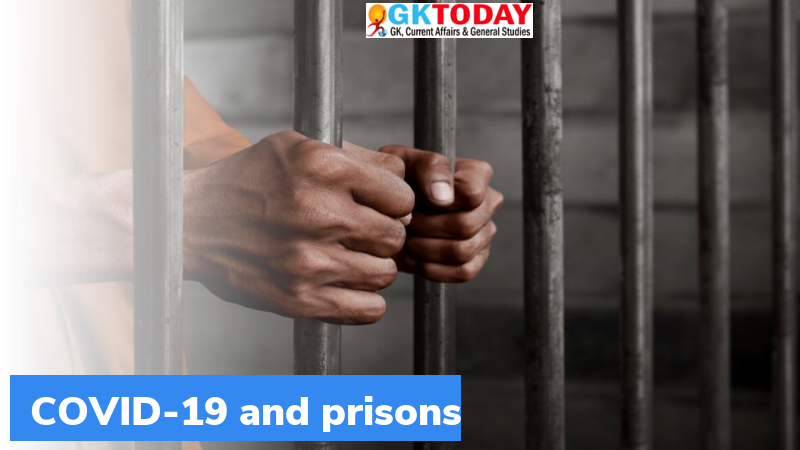COVID-19 and Prisons
After COVID-19 struck in 2020, the number of COVID-19 positive cases in prisons have become a cause of worry. With the prison occupancy rates at 118% social distancing is impossible.
Background
The prisons are overcrowded with more than 70% under trial prisoners. According to the “Prison Statistics India Report, 2019”, there were 4.78 lakh inmates in more than 1,300 prisons in the country. Most of these prisoners were from economically poor backgrounds. Of these 85% were from Scheduled Tribes, Scheduled Castes, Most Backward Classes and Muslim communities.
Supreme Court
- In March 2020, the Supreme Court took a suo mottu notice on the conditions that prevailed in prisons due to COVID-19. This led to the constitution of High-Power Committees at State level. The committees categorised the prisoners. Based on the categories, the prisoners were released on temporary bail and parole. This was mainly done to reduce overcrowding of prisons.
- Later, to reduce the new admissions, the SC provided new instructions to the police. According to the instruction, the police shall arrest only offenders, whose offence will bring more than seven years of imprisonment as punishment. However, it was applied to the current prisoners as well. Under this order, another 60,000 prisoners were sent home on temporary bail. In all this reduced the prison population by 15% to 20%.
- In February 2021, as the COVOD-19 cases were subsiding, the courts passed order asking the prisoners to return to their prisons where they were imprisoned. Many prisoners returned.
- Again, in May 2021, after the double mutant COVID-19 surge, the court began steps towards decongestion of prisons.
- Recently, the Supreme Court has advised house arrest of the prisoners as solution.
Month: Current Affairs - May, 2021


